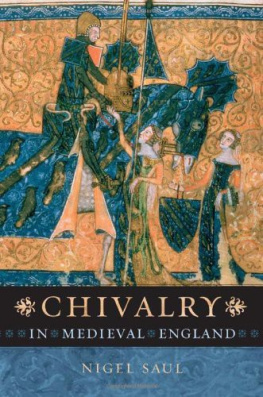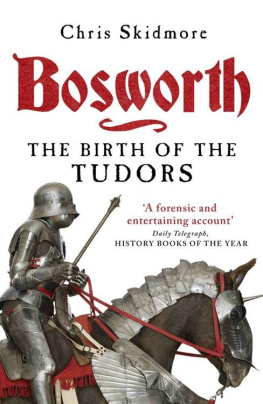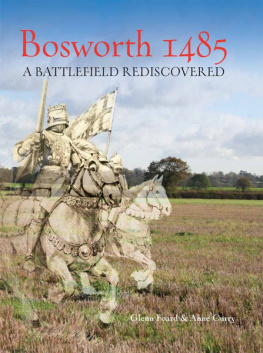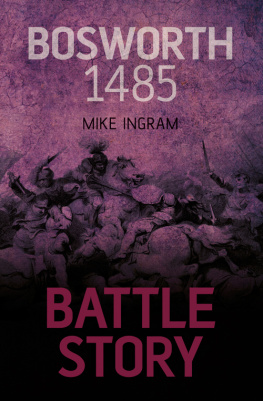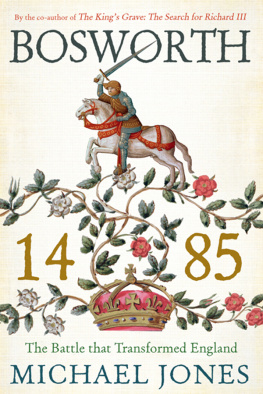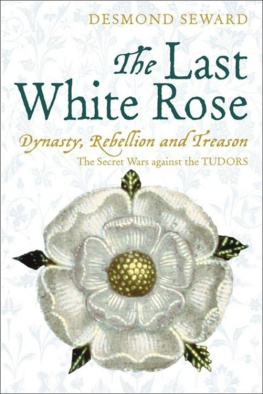RICHARD III
AND THE DEATH OF CHIVALRY
RICHARD III
AND THE DEATH OF CHIVALRY
DAVID HIPSHON
First published in 2009
The History Press
The Mill, Brimscombe Port
Stroud, Gloucestershire, GL 5 2 QG
www.thehistorypress.co.uk
This ebook edition first published in 2011
All rights reserved
David Hipshon, 2009, 2011
The right of David Hipshon, to be identified as the Author of this work has been asserted in accordance with the Copyrights, Designs and Patents Act 1988.
This ebook is copyright material and must not be copied, reproduced, transferred, distributed, leased, licensed or publicly performed or used in any way except as specifically permitted in writing by the publishers, as allowed under the terms and conditions under which it was purchased or as strictly permitted by applicable copyright law. Any unauthorised distribution or use of this text may be a direct infringement of the authors and publishers rights, and those responsible may be liable in law accordingly.
EPUB ISBN 9780752469157
MOBI ISBN 9780752469164
Original typesetting by The History Press
CONTENTS
ACKNOWLEDGEMENTS
I owe a debt of gratitude to far more people than I could possibly mention here, but hope I may be able to repay some of that debt in the course of time. Meanwhile, space allows me to mention but a few. I would especially like to thank Rosemary Horrox for her kindness, understanding and willingness to help when I despatched random plaintive emails. She unwittingly sowed the seeds for this book by bringing the Stanley-Harrington feud to my attention during a supervision in my MPhil year at Cambridge. I apologise to Rosemary for the anguish she may suffer when she glances at the result. I would also like to thank Martin Lubikowski for his ever-optimistic encouragement and help in the early days. My colleagues and pupils at St James all deserve medals for having to put up with me in general, but I would particularly like to thank David Marshal and Peter Crompton for reading and commenting on some of the early chapters. I would also like to thank my good-humoured and enthusiastic sixth-formers for their interest and support, particularly in making suggestions for these acknowledgements. My eldest daughter Emma was ever-willing to read drafts and give sound advice. I would like to thank her and the rest of the family, and especially my wife Sarah Jane for her unfailing presence. Finally, my father brought home a copy of Paul Murray Kendalls book on Richard III when I was a boy. I still have that book: it was the first history book I read from cover to cover. It sparked a life-long interest in Richard III and the search for truth in history. This book is dedicated to the memory of my father and his quest for truth, not only in history, but in life itself.
ONE
THE SHADOW OF AGINCOURT
On 22 August 1485 Richard III, by the Grace of God King of England and of France and lord of Ireland, wearing a specially-made golden crown fitted around his helmet, spurred his horse and charged into battle. By his side were his knights of the Body, his friends and loyal servants who had worked with him, lived with him and fought with him over many years. As the trumpets and drums were sounded and the stocky war-horses began to canter, the royal standard was unfurled and held aloft for all to see. It bore the cross of St George, patron saint of England and of soldiers, the white rose encircled by the rays of the sun representing the house of York and the white boar of Richard himself. Woven into the design was the royal motto, Dieu et Mon Droit, For God and My Right. The man entrusted with the honour of bearing into battle this heraldic symbol of majesty was James Harrington, friend, counsellor and retainer of the king. Around them were Harringtons kinsmen and associates, colleagues and comrades, the Dacres, Parrs, Middletons, Huddlestons and Pilkingtons. These men were bound together by ties of family, history, culture and aspiration. They were intensely loyal to their lord and master, Richard III, and were willing to fight for him even unto death.
As their horses began to gallop down the slope, with armour and swords glinting and ringing in the dank dawn air hanging over the Leicestershire fields, the lives of these men rose up from the mundane to the sublime, entering a sphere in which the heroic deeds of legend, myth and history could be emulated in a reality that they had each striven to realise. They were to be tested in battle and with their education and training behind them, their true characters would now be revealed. In this moment lived the hope of everlasting glory, fame and honour. Wedded to the service of their lord by oaths of fealty, and to each other through their shared values and kinship, this troop of the royal household, the knights of the Body, armed with swords, flails, hammers, axes and lances, presented a spectacle of power, courage and unity which would never be seen again on English soil. As the hooves of several hundred horses thundered across the battlefield, an ancient code of ethics and loyalty, of honour exemplified in action through religious and physical sacrifice, was charging to an impelling convulsion. This last charge of knights in English history was more than the last throw of the dice for a beleaguered king: it was also the end of an era and the death of chivalry.
As the king and his knights, several hundred strong, swept in a panoply of power past the vanguard of the duke of Norfolk to their right, they may have known already that the loyal duke had been killed, and that the royal men-atarms in the marshy ground were being pushed back and were on the point of breaking. To their left stood the troops of Cheshire and Lancashire under the command of Thomas lord Stanley and his brother William. Ahead lay the isolated and vulnerable target presented by the rebel earl of Richmond, Henry Tudor, and his contingent of Lancastrians, exiles and French mercenaries. He had been moving towards the Stanley forces to encourage them to abandon King Richard and join him in his attempt to gain the throne. The tidal surge of horse and man pouring across the valley prevented that meeting and separated the untrustworthy Stanley brothers from the Tudors troops. Before the king lay his prey, the inexperienced Henry Tudor with a group of knights uncertain and untested in quality. Richards household troops crashed into the Tudors guard and began to force their way forward towards him through a melee of flashing maces, axes and swords. At that moment when all hung in the balance and the life of Henry Tudor lay at the mercy of the last Plantagenet king of England, William Stanley made his move. In an act of calculated treachery he threw his men into the fray and hurled them at the backs of the royal knights. Within feet of his quarry, Richard, having killed Henry Tudors standard bearer with his own hand, was surrounded and hacked to death, crying, Treason! Treason!

Richards death after a short reign of just over two years ushered in the Tudor era and, with it, the inevitable vilification of Richard and the destruction of his reputation. Richard was the most controversial king in English history even without the work of the Tudor propagandists. When his brother, Edward IV, had died in 1483, he had left his eldest son, twelve-year-old Edward V, as his successor. Within weeks the boy, with his younger brother, Richard, had been taken to the Tower of London from whence they never emerged. These two boys, the famous Princes in the Tower, were believed to have been murdered on the orders of Richard III, their uncle, so that he could become king instead. In a shocking and swift coup, Richard had seized power against all expectations, sweeping aside political opponents, ancient conventions and formal legalities. It is hardly surprising that the Tudor historians, keen to shore up the shaky credentials of Henry Tudor, should have had such an easy time in blackening Richards name and thereby justifying the accession of Henry VII.




